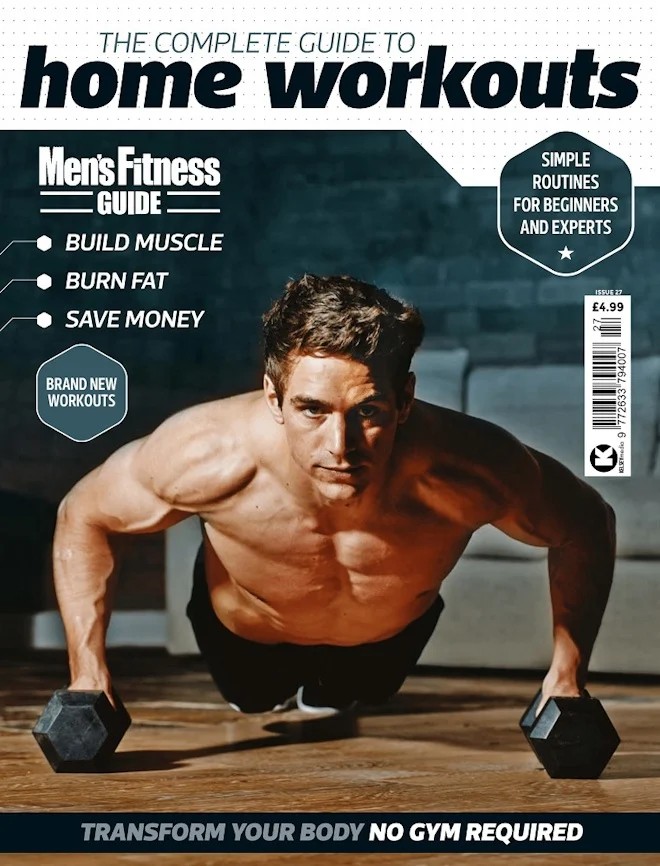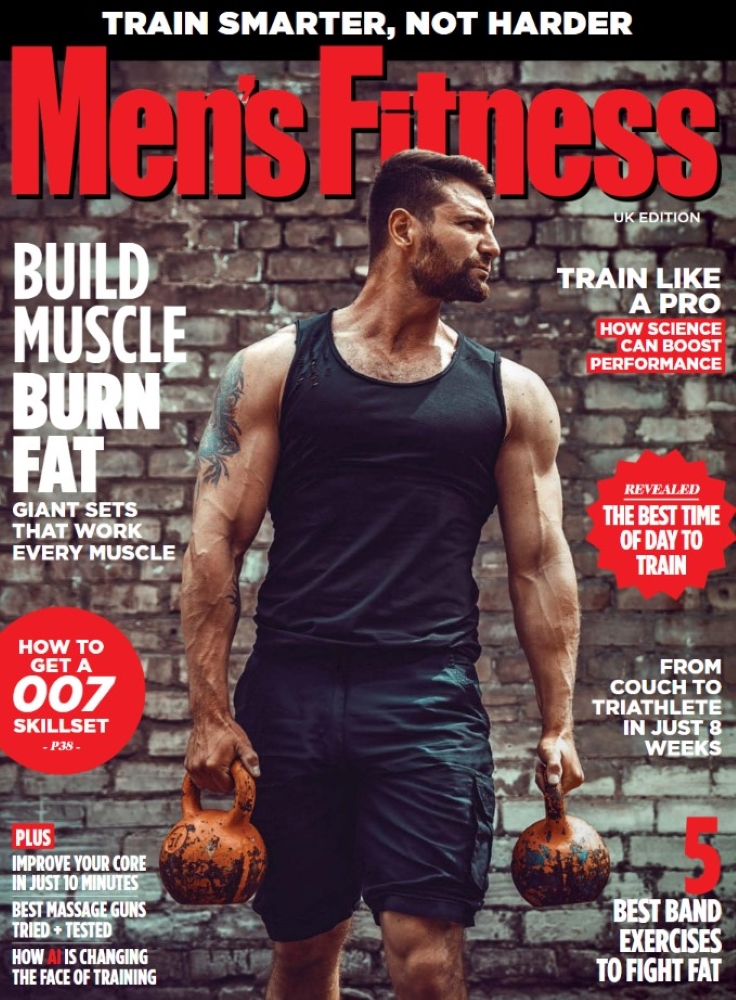As Britain’s Strongest Man, Adam Bishop can teach you a thing or two about busting through a plateau in the weights room.
Adam Bishop is Britain’s Strongest Man, the second strongest man in Europe and a World’s Strongest Man finalist in 2019.
By day, Bishop is strength and conditioning coach at Harlequins Rugby, responsible for developing explosive power in England’s elite rugby players.
MF caught up with the 31-year-old to find out some of the secrets to his serious strength…
1. DON’T RUSH IT
If you’re expecting rapid progress, Bishop says you’ll be disappointed.
“One of the biggest mistakes I see guys in the gym make is trying to progress too quickly,” he says. “They don’t have a long-term goal, they just want to lift as much as possible straight away.”
Social media has a lot to answer for in this regard, says Bishop:
“We’re in the Instagram age where you see people posting their best lifts all the time, so people think they’ve got to try and emulate that.”
Following a set plan can help you achieve your strength goals in a timely and attainable manner that is specific only to you.
“Not going into the gym with a plan is a one-way ticket to ‘snapville’,” Bishop adds.
2. CALL ON COMPOUND LIFTS
They might not be sexy or fashionable, but basing your training on compound lifts will see your strength surge to unprecedented levels.
“They’re your bread and butter, and the cornerstone of a strength training programme,” says Bishop.
“Most people don’t have an unlimited budget for kit, or unlimited time in the gym. Squats, bench presses, deadlifts and military presses – these large, multi-joint exercises – will give you your biggest bang-for-your-buck.”
3. AVOID THE EASY OPTION
Don’t be fooled by the relative simplicity of the basic, compound lifts. They get results because they put such a high level of stress and stimuli on your major muscle groups, central nervous system (CNS) and connective tissue.
“We have to remember that getting stronger is an adaptation to stress,” says Bishop.
While bodybuilding-style isolation exercises have their place, Bishop says they aren’t as taxing on the major muscle groups, don’t require as much energy, and ultimately don’t correspond to increased overall strength.
“Take a triceps cable pushdown, for instance, and compare it to a dip or close-grip bench press,” says Bishop.
“These larger, tougher exercises are the ones that’ll give you the better chance of taking your strength to the next level.”
View this post on Instagram
Stocking up on the essentials in case a second lockdown happens. #bishbashbosh
4. TRAIN LIFTS NOT MUSCLES
Most people tend to base their workouts around a specific muscle group, regardless of whether they’re training for muscle growth, fat loss, a sport or overall fitness.
Chest Mondays, leg day, arm day – we’ve all been there.
But Bishop says that a more effective method for gaining strength is to train lifts instead of muscle groups.
“For the vast majority of people – guys who are not pro bodybuilders – it’s very hard to see muscle growth in a mirror if all you’re doing is a series of isolation exercises week-on-week,” says Bishop.
“How do you know if an isolated bicep curl is adding any muscle to your body?
“If you think, ‘Last week I deadlifted 200kg for five reps, this week I’ve done 210kg for five’, you’ve increased your strength through a neural adaptation, and you’re also likely to have gained muscle mass.”
5. MANAGE YOUR MICROS
When dieting for a surge in strength, Bishop says a common mistake made is excessive focus on calories.
“Guys always focus on calories, calories, calories,” he says. “But getting your micronutrients in is key.”
While it’s difficult to get stronger in a calorie deficit, you shouldn’t take this as licence to binge. Your calorie surplus should only be slight, and should focus on foods rich in micronutrients: vitamins, minerals and nutrients.
“Get your greens in, your multivits and omega-3 fatty acids.”
6. SLEEP IS ESSENTIAL
Bishop says the hour you spend in the gym is not that important, overall.
It might sound counterintuitive, but what matters more is how you recover from intense strength training sessions.
“The first thing we need to look at for recovery is good-quality sleep,” he says.
Sleep promotes the body’s natural release of testosterone and growth hormone – both vital for adding extra weight onto the bar in the gym.
“It doesn’t matter how many ice baths or cryotherapy sessions you’re having if you’re not getting good-quality sleep”, says Bishop – who is a Levitex ambassador.
7. FORGET ‘BEAST MODE’
Modern fitness culture places a great emphasis on the importance of training with extreme intensity, typified with the popular level of support for mantras such as ‘beast mode’ and ‘team no days off’.
But Bishop says you need to know when to switch off, too, because recovery is your best friend for adapting and growing in the gym.
“If people apply the level of commitment they show in the gym to every other aspect of their life – getting their meals in, going to bed at the right time, sleeping in a tidy and comfortable environment – their results would improve so much.”
Adam Bishop’s rest and recovery is aided by Levitex, a specialist pillow and mattress producer using foam technology to ease neck and back pain.
Words: Alex Roberts









